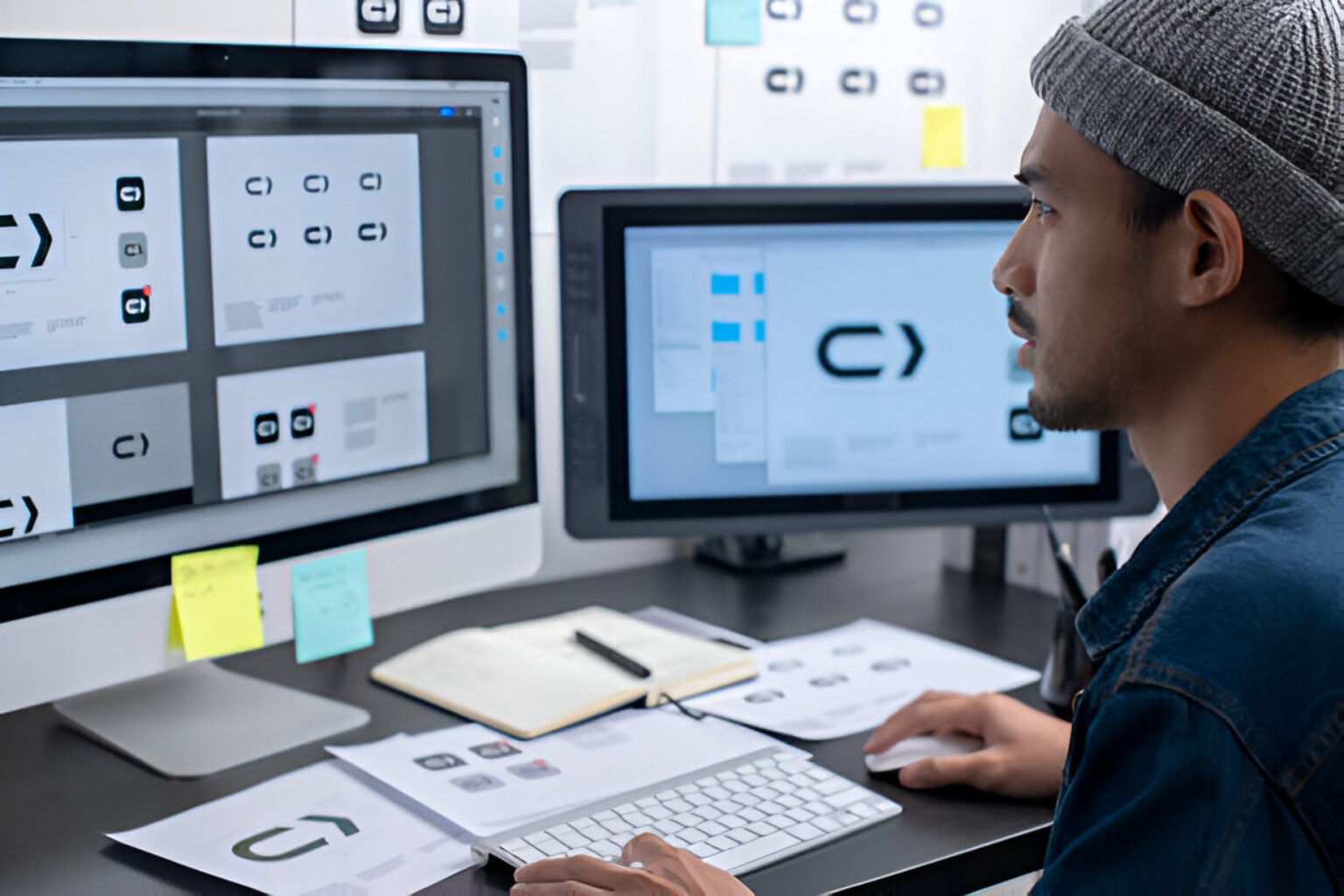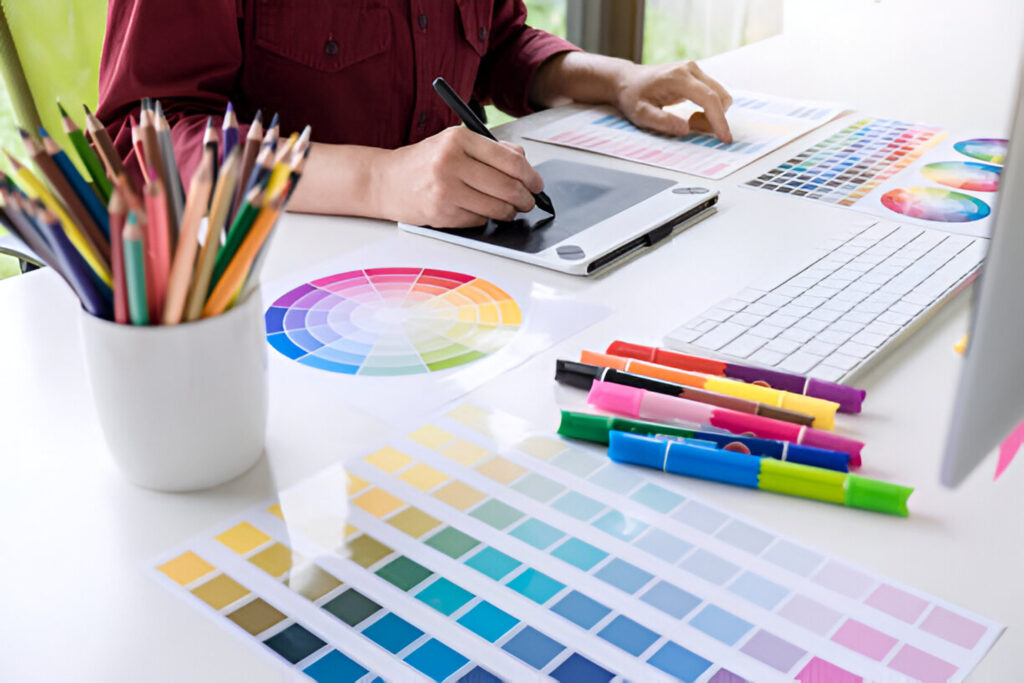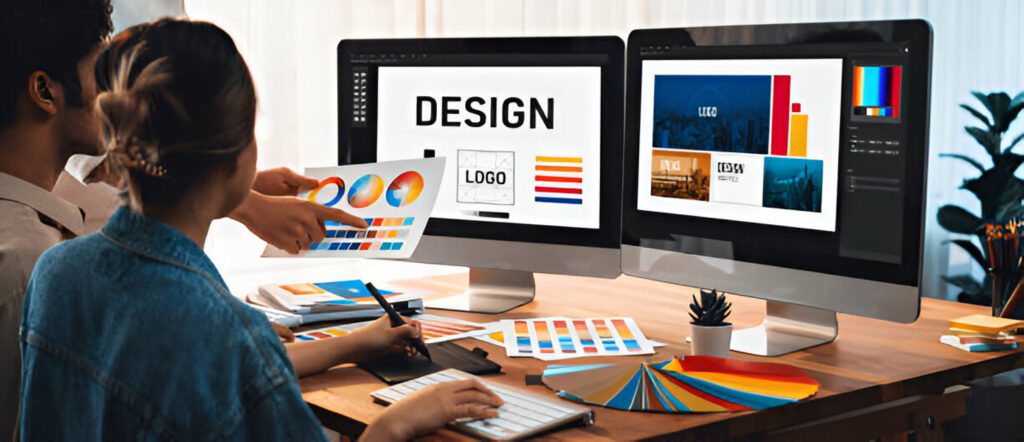“Amplify Your Impact With Our Marketing Magic”


Graphic design is a multifaceted discipline that encompasses visual communication through the use of typography, photography, iconography, illustration, and layout techniques. It is both an art and a science, blending creativity with strategic thinking to convey messages, evoke emotions, and solve problems. In this exploration, we’ll delve into the fundamentals of graphic design in India, its history, its impact on society, its role in branding and marketing, and its evolving trends in the digital age.
TYPES OF GRAPHIC DESIGNING:
Graphic design shapes our daily lives in profound ways. It influences how we perceive brands, products, and information. Effective graphic design can evoke emotions, communicate complex ideas, and drive behavior. For example, a well-designed logo can instantly communicate a company’s values and differentiate it from competitors.
In advertising and marketing, graphic design plays a critical role in capturing attention and persuading consumers. Packaging design influences purchasing decisions, while web design determines how users interact with online content. In publications, layout and typography affect readability and engagement.
The art of selecting and arranging typefaces (fonts) to make written language readable and visually appealing. Typography plays a crucial role in setting the tone and personality of a design.
The arrangement of visual elements on a page or screen. A good layout guides the viewer's eye and enhances the readability and impact of the design. It involves balancing elements such as text, images, and negative space.
Organizing elements within a design to prioritize their importance. This helps viewers navigate the content intuitively, focusing first on key messages or calls to action.
The use of images, illustrations, icons, and symbols to complement or reinforce written content. Visual elements can convey complex ideas quickly and memorably.
Understanding how colors interact and affect perceptions is essential in graphic design. Colors evoke emotions and can influence how a message is perceived. Designers use color palettes strategically to reinforce brand identity or create visual hierarchy.


Kick-off with a cear brief, goals, audience and message
Dive into trends, competitors and history for creative sparks.
Brainstorm and sketch to visuatize the concept
Showcase your designs, gather feedback and iterate.
Bring sketches to life with digital tools and refinement.
Make final adjustments and prepare the design for delivery

Market Research
Market research is an organized effort to gather information about target markets and customers.

Competitive Analysis
Find positive and negative opinions about your brand and your competitors.

Identify Target Audiences
To identify a target audience, you can analyze customers data, reaserch competitors, and conduct surveys.

Set Goal Objectives
A goal is an outcome that you want to achieve, while an objective is the specific actions you need to take to achieve that goal.

Graphic design has become an integral part of every modern business, and the value of good design cannot be overstated. From logo creation to website design, the way a brand presents itself visually is often the first impression customers get. I've had the opportunity to work with several graphic designers, and their ability to create visuals that truly reflect a brand's message is impressive. Whether it's designing marketing materials or curating social media graphics, the quality of design can elevate a brand's image, improve user engagement, and ultimately drive business success. Professional designers understand the importance of color theory, typography, and layout, ensuring that each piece is visually appealing and purposeful. As a business owner, investing in great graphic design is one of the best decisions you can make.

Graphic design is a unique blend of creativity and technical expertise. The best graphic designers I’ve worked with have an exceptional eye for aesthetics and are also well-versed in the technical tools required to execute their ideas. Whether using Adobe Illustrator, Photoshop, or InDesign, their knowledge of design software is vast, allowing them to manipulate elements precisely and effectively. However, design isn't just about making things look pretty – it’s about solving problems. Graphic design has the power to communicate complex ideas simply, and when done right, it creates seamless user experiences across websites, apps, and advertisements. One area I think could improve in some cases is the balance between creativity and clarity, as sometimes abstract designs can get a bit too overwhelming for the intended audience. But overall, when it’s done well, graphic design is a powerful tool.

As someone who works in marketing, I rely heavily on graphic design to bring ideas to life. The impact of design is not just about aesthetics; it's about storytelling. A well-designed graphic can capture a narrative that resonates emotionally with the audience, creating a memorable experience. Graphic designers are essentially visual storytellers, using their skills to turn concepts into something tangible. For example, a strong, consistent brand identity across all platforms communicates trust and reliability. I've seen designs take a mediocre campaign and turn it into something that connects deeply with people. While it's easy to dismiss design as "decoration," great designers can use color, shape, and typography to elevate a message and make it unforgettable. I would highly recommend working with professional graphic designers who are passionate about their craft.


Graphic design shapes our daily lives in profound ways. It influences how we perceive brands, products, and information. Effective graphic design can evoke emotions, communicate complex ideas, and drive behavior. For example, a well-designed logo can instantly communicate a company’s values and differentiate it from competitors.
In advertising and marketing, graphic design plays a critical role in capturing attention and persuading consumers. Packaging design influences purchasing decisions, while web design determines how users interact with online content. In publications, layout and typography affect readability and engagement.
© 2025 Created digitizewithshweta